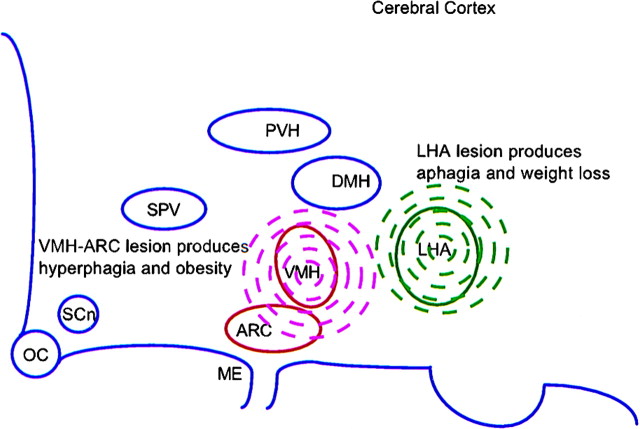Maintaining energy homeostasis and storing calories when food
is available is fundamental for survival. In the modern world, a
disruption in energy balance from an increase in calories consumed
compared to energy expended is more common than a
food scarcity. Unfortunately, over nutrition can lead to obesity,
diabetes, nonalcoholic fatty liver disease, colon cancer and
many other significant chronic diseases. Clearly, obesity is an
increasing public health problem, as now more than two-thirds
of the US population is now overweight or obese and parallel
occurrences are being seen virtually worldwide
All species have faced the challenge of adapting to scarcity of food and thus strategies to deal with major discrepancies in food availability have evolved to allow propagation of the species. It is clear that the nervous system is the ultimate regulator of these adaptive mechanisms. The central nervous system’s role in regulating energy balance in a coordinated fashion with the constantly adjusting energy intake, expenditure and storage was first demonstrated by early studies in which selective surgical lesions of certain hypothalamic areas was found to result in extreme obesity in rats
All species have faced the challenge of adapting to scarcity of food and thus strategies to deal with major discrepancies in food availability have evolved to allow propagation of the species. It is clear that the nervous system is the ultimate regulator of these adaptive mechanisms. The central nervous system’s role in regulating energy balance in a coordinated fashion with the constantly adjusting energy intake, expenditure and storage was first demonstrated by early studies in which selective surgical lesions of certain hypothalamic areas was found to result in extreme obesity in rats
Neurons in the hypothalamus
including those in the arcuate nucleus are
targets of a number of key hormones and
metabolic cues. These neurons target several
downstream sites to influence complex
circuits in the central nervous system
(CNS). The downstream effector circuits
mediate the coordinated autonomic,
behavioral, and endocrine responses to
changing levels of metabolic signals.
Diminished responses of first order neurons
such as those in the arcuate nucleus may
contribute to the pathogenesis of obesity
and type II diabetes. This includes increased
body weight, uncontrolled glycemia, and
altered insulin secretion and insulin
sensitivity in target tissues such as liver,
adipose tissue, pancreas, and skeletal
muscle. Thus, the CNS not only regulates
food intake and body weight, but also plays
a key role in regulating glucose homeostasis
in peripheral tissues.
vagus nerve serves as a
critical link between changing energy availability and coordinated
control of glucose homeostasis The nervous system senses peripheral metabolic cues, resulting
in coordinated energy homeostasis.





No comments:
Post a Comment